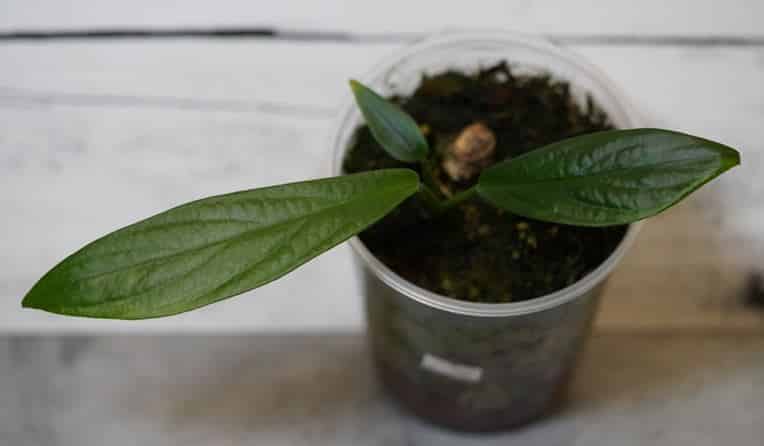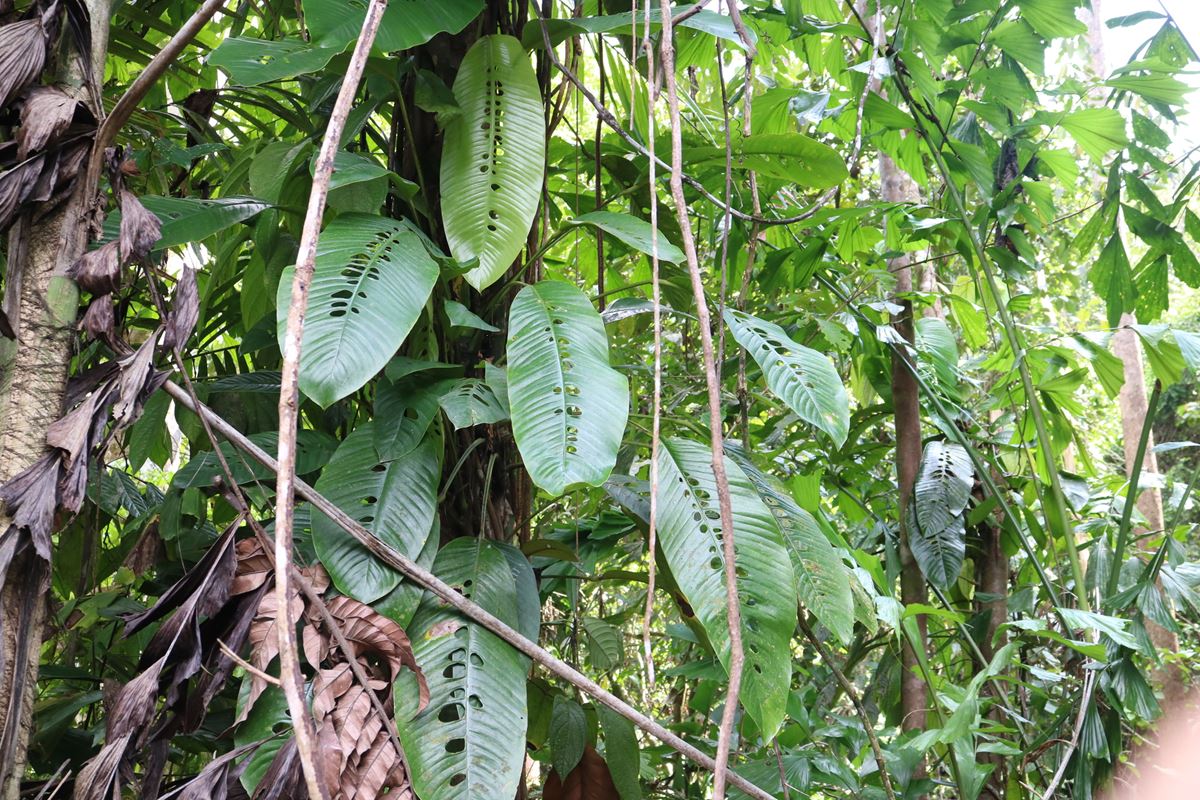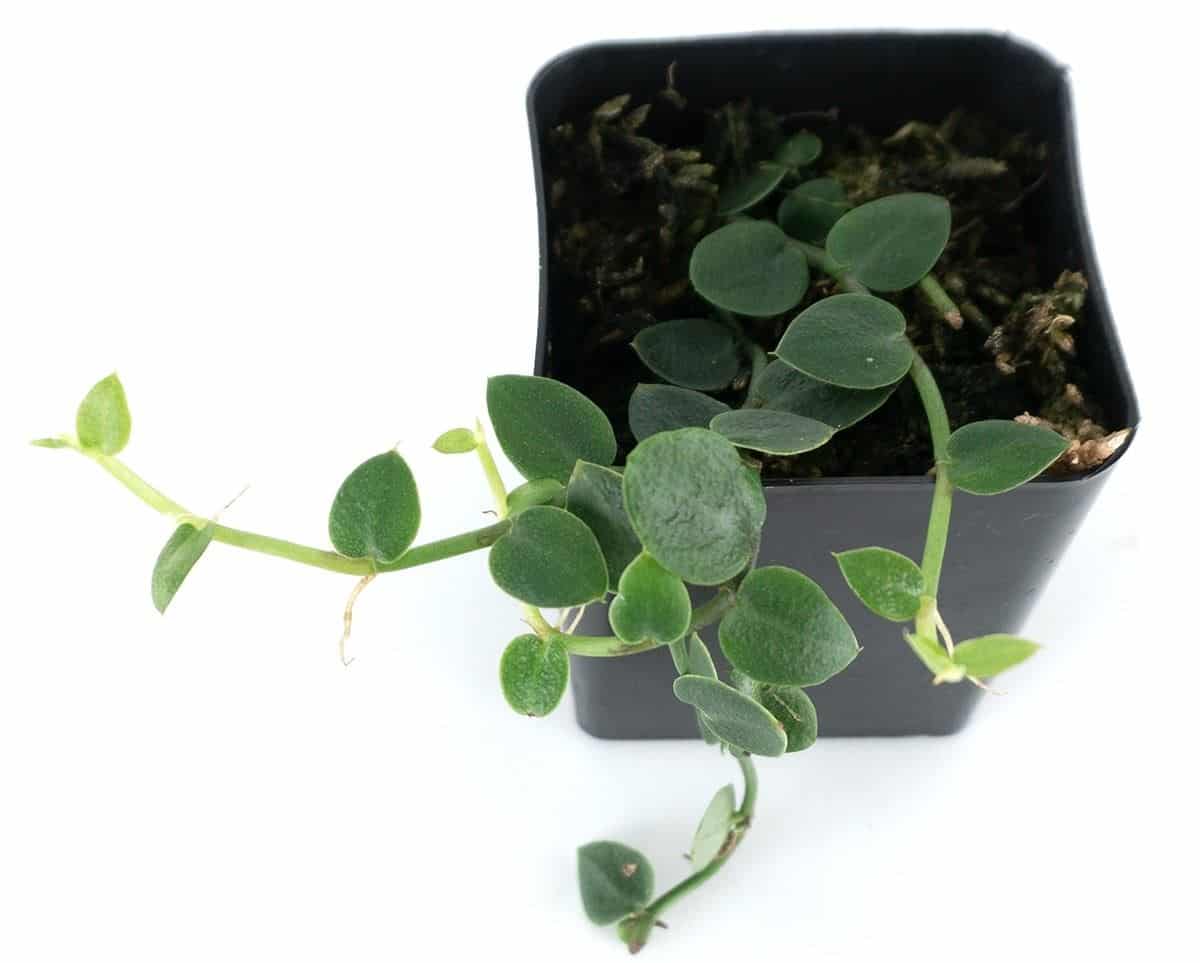Rhaphidophora beccarii is a rare houseplant with entire narrow shingling juvenile leaves and entire to split narrowly lance-shaped to oblong-elliptic leaves. It is one of the obligate rheophytes (grows only in fast-moving water) that will add tropical charm to your house.
Learn more on R. beccarii, including habitat, growing habits, appearance, care, and so on.
Contents
Overview
- Scientific name: Rhaphidophora beccarii
- Synonyms: Epipremnum beccarii, Rhaphidophora borneensis, or Rhaphidophora fluminea
- Tribe: Monstereae
- Family: Araceae (arum family or the so-called aroids)
- Native habitat: Throughout Borneo and some parts of Peninsular Malaysia, Thailand, and Indonesia
- Common names:
- Toxicity: Toxic to humans, cats, dogs, and other pets because it has insoluble calcium oxalate.

Description and appearance
To correctly identify this plant, you need to know what it looks like (leaves, stems, or flowers) and its growing habits. Here is a brief description:
1. Growing habits
Rhaphidophora beccarii is a small to medium creeping rheophyte (a plant that grows in fast-moving water) native to Borneo and some parts of peninsular Malaysia, Indonesia, and Thailand. But it may on rare occasions be as a short liana that hardly goes beyond 2.5 feet.
Its seedling stage grows towards the light (non-skototropic) and shingles in the juvenile stage. As it grows to adulthood, it will have erect or spreading leaves.
In the native habitat, it occurs at 295-2952 feet (70-900 m) altitude, and you will find them on waterways (streams or rivers) creeping or attached to rocks, mainly limestone and granite. They can also grow on soft mud, sanded river bed, wooded stones, etc.
One unique thing about this species and R. geniculata (native to New Guinea) are the only obligate rheophytes, meaning they only grow in flowing water. But you can tell their differences since R. beccarii has pinnatifid leaves.
Last but not least, there are variant forms of R. beccarii, common ones being the narrow and broad form. Some narrow-leaved kinds may not have split leaves at maturity or flowering age.
2. Growth rate and size
If grown under ideal conditions, it is an aggressive grower. But as you already know, it doesn’t get huge, i.e., it won’t go beyond 2.5 feet.
3. Juvenile and mature leaves
Rhaphidophora beccarii has entire, shingling, narrow, and elongated juvenile green leaves that become erect, scattered or spread as it grows into pre-adult.
Mature leaves are erect and maybe entire, pinnatifid to pinnatisect. Also, they are narrowly lance-shaped to oblong-elliptic and slightly oblique, measuring 8.3 to 21 inches long and 0.8 to 9 inches wide. Their texture is somewhat leathery, and they are a little fleshy.
Their vaginate petiole is narrow and has prominent lower and upper genicula. The petiolar sheath extends up to the upper geniculum and may persist but degrade into fibers.
Lastly, this plant has abundant trichosclereids, i.e., hair structures that help protect it from herbivores. Tearing a mature leaf will make them evident or easy to see.
4. Stems
Stems are thin (0.4 inches) and mid to dark green with 2.8 inches internode. Petiolar sheath fiber is sparse, and you will notice slightly oblique leaf scars. Also, these stems have dense anchoring roots and densely scaly and strong feeding roots. Feeding roots are the ones that go to the ground.
5. Flowers and fruits
These plants will have 1-3 inflorescence per axil subtended by a cataphyll which will degrade into fibers before the flower opens. They have dull-whitish small inflorescence flowers on a spadix, surrounded by a greenish to dull white spathe. This narrow, stout-beaked, canoe-shaped spathe will fall at anthesis.
The fruiting spadix is mid-green by the time it ripens, and like other plants in this genus, it will have aggregate fruits or what botanists call infructescence. Please don't eat the fruits. They are also toxic, just like the rest of the plant.
Rhaphidophora beccarii care
This plant is easy to care for or has low maintenance. If you have any other Rhaphidophora, this species shouldn’t be harder to grow.
Here are the Rhaphidophora beccarii care and growth requirements.
- USDA hardiness zone: 11-12 (not frost hardy and cannot stand freezing temperatures.
- Humidity: Average to above average, 50% or more. If your home has low humidity, mist your plants a few days a week, use a pebble tray, take them to rooms with higher humidity (like a toilet) or buy a humidifier like AquaOasis™ Cool Mist Humidifier, Amazon's best seller.
- Temperature: 55 to 85°F (12.8-29°C) is ok with the optimal range being 70-80°F (21-27°C). Avoid cold drafts, abrupt temperature changes, or heat stress.
- Light needs: Provide bright, indirect light for about 12 hours a day. Avoid direct sun and if in a poorly lit room, go for grow lights. A good brand to consider is Relassy 15000Lux Sunlike Full Spectrum Grow Lamp.
- Best soil mix: Go for an airy, well-drained soil with high organic matter. You can buy an aroid mix or make your own.
- Watering: Thoroughly water when the potting mix’s top 1-2 inches feel dry. Please don’t follow a routine as water needs tend to vary.
- Fertilizer: Feed about once a month in the growing season using an all-purpose, balanced, liquid houseplant fertilizer at half strength. We use Bonide Liquid Plant Food 10-10-10 and feed once a month.
- Pruning: Regularly cut dead, diseased, or damaged leaves with sterilized gardening shears. You can cut it back at the start of spring if you need to check its size and shape.
- Repotting: Repot after 1-2 years or when rootbound. Use a pot 2-3 inches wider in diameter than the current one and do it in spring or early summer.
- Stake: Optional. But since it’s a climber, we recommend you provide a stake (trellis, totem, or moss pole) and train your plant.
Propagation
The best way to propagate Rhaphidophora beccarii is by stem cutting in water or soil. But you can use seeds (not easy to find), air layering, or division.
The best time is spring, as it gives them time to establish before the non-growing months on when to propagate these plants. Early summer will still work well.
The following stems are similar to those you follow when propagating any other Rhaphidophora, including Rhaphidophora tetrasperma, pertusa, hayi, decursiva, etc.
Rhaphidophora beccarii problems
- Pests: Uncommon indoors. But your plant may have aphids, thrips, scale insects, whiteflies, mealybugs, or spider mites. Use insecticidal soaps, horticultural oil sprays, or neem oil.
- Disease: Uncommon. Nonetheless, your plants may have root rot, bacterial and fungal leaf spots, rusts, or blight. Practice proper sanitation and don’t overwater your plants (the leading cause of root rot). Also, repot plants with root rot if the whole rooting system hasn’t decayed.
- Leaves turning yellow: Most likely cause is overwatering. Other less frequent causes are low humidity, too little light, too much light, etc.
- Brown tips, edges, spots, or leaves: Brown tips, edges, or spots are a sign of leaf scorch due to underwatering, heat stress, too much light, and low humidity. Brown splotches may signify overwatering and leaves turning brown overnight cold drafts.
- Black spots on leaves: A sign of diseases (brown to black lesions) or pests.
- Leaves curling: Your plants are thirsty, or humidity is low. Other causes are heat stress, too much light, plant shock (if you repotted or transplanted), rootbound, etc.
- Leaves drooping: It tells you that your plant is either underwatered or cannot absorb water. It may also be a sign it loses more than it absorbs. Causes include underwatering, low humidity, heat stress, too much light, etc.,
Prices and where to buy
The price of Rhaphidophora beccarii will range from $50 to $300. In the US, you may pay more since the plant is rare and not readily available.
If you are looking for where to buy it, try Etsy.com, eBay, Facebook, or Instagram. Here, you cannot miss people who have this plant. You are unlikely to get it in your local tropical plants or specialty stores.
Besides the above, google for “Rhaphidophora beccarii for sale” to see any local vendors around you selling it. Please note that even online, it is still not easy to find this lovely plant.





Leave a Reply